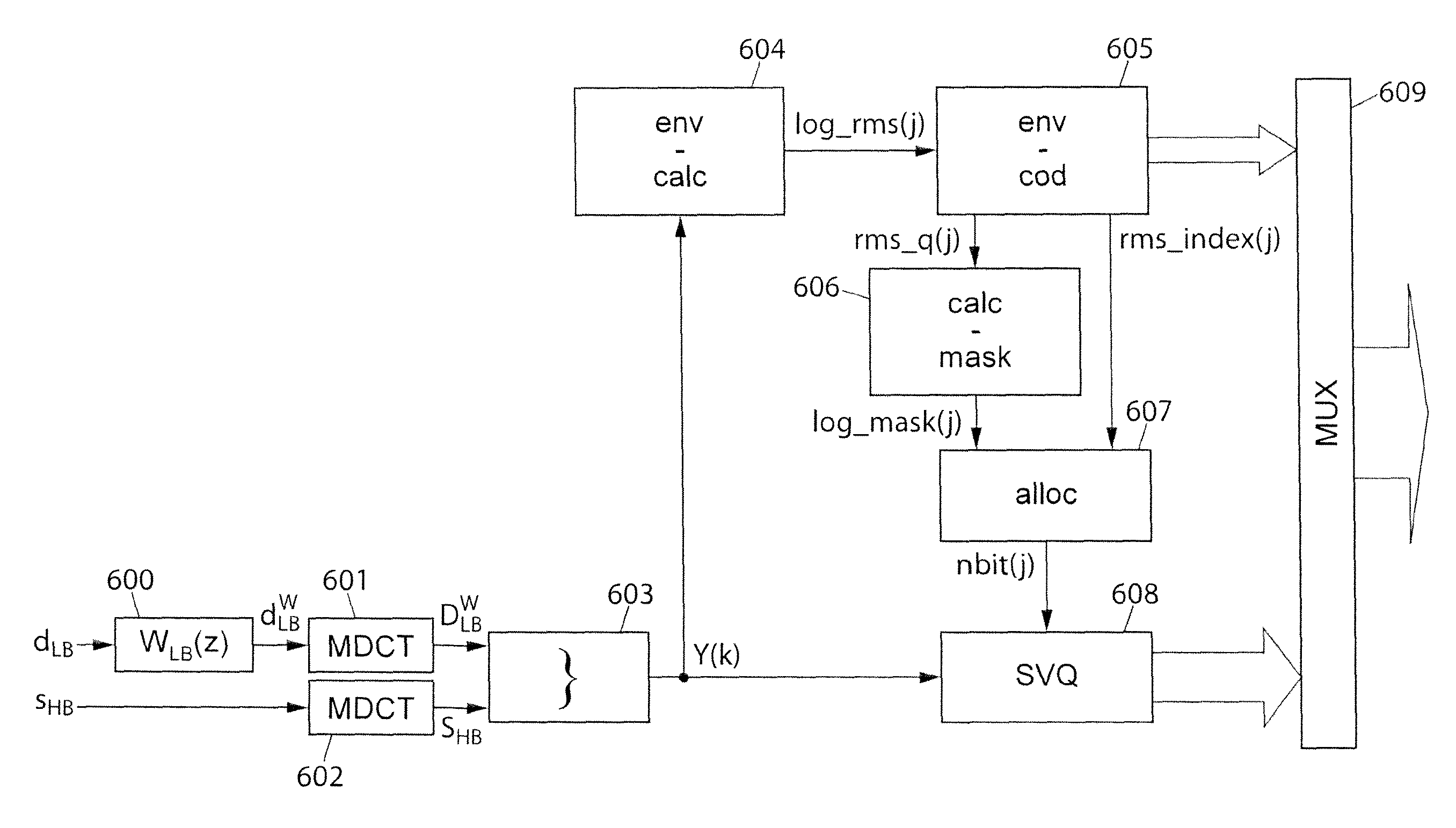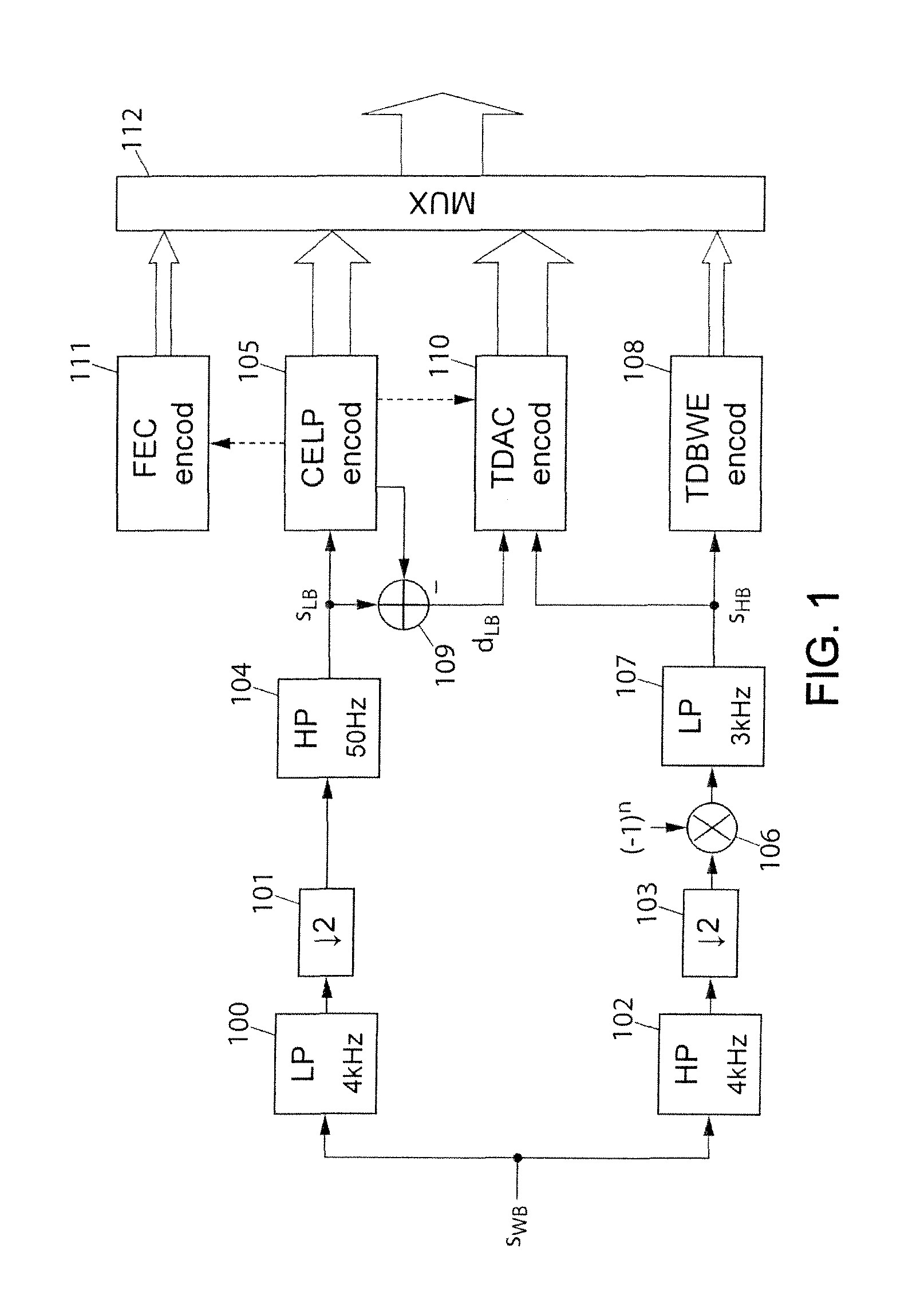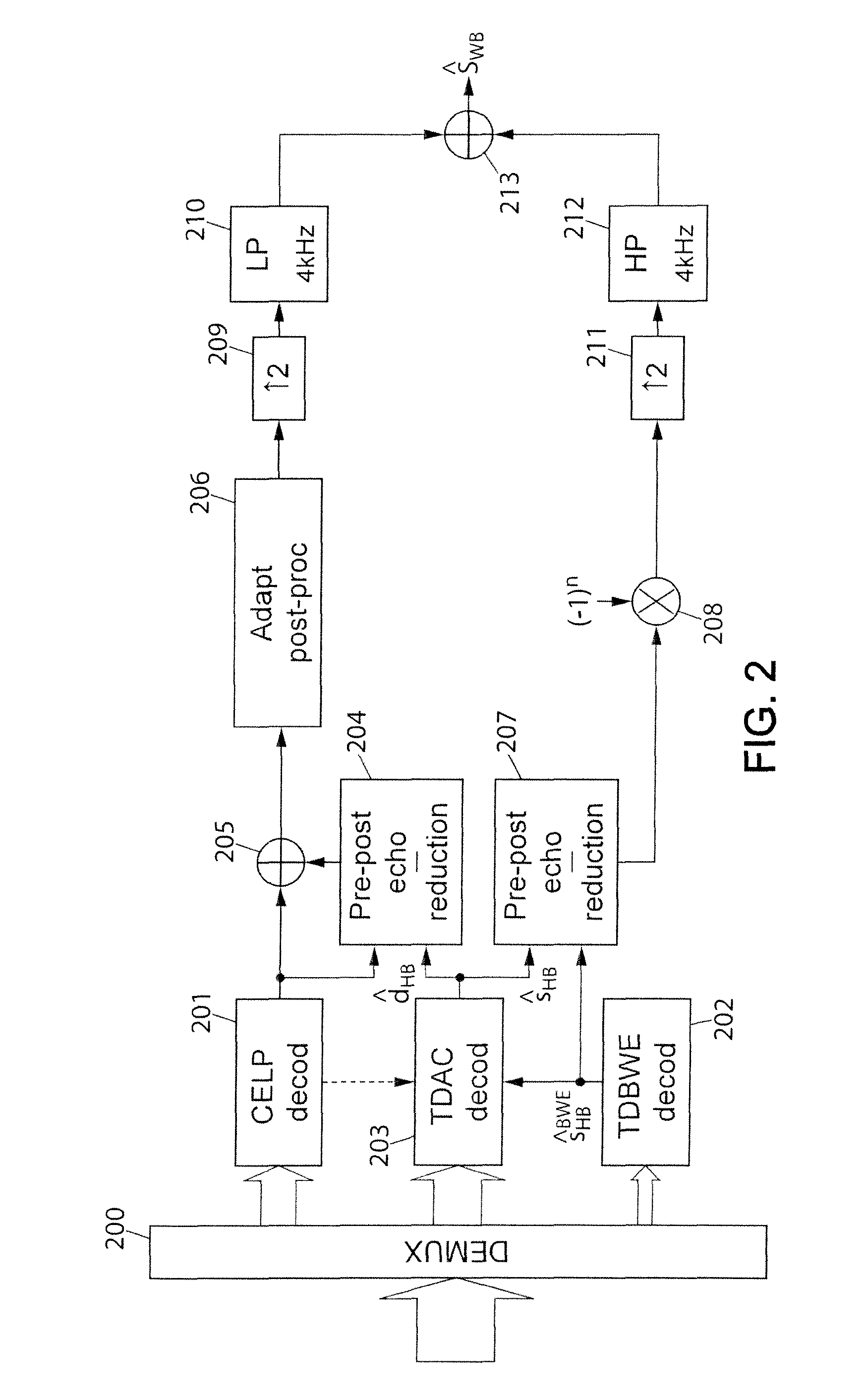Coding/decoding of digital audio signals
a digital audio and signal technology, applied in the field of processing acoustic data, can solve the problems of not all received by the decoder, and the problem of continuity and homogeneity of spectra between sub-bands
- Summary
- Abstract
- Description
- Claims
- Application Information
AI Technical Summary
Benefits of technology
Problems solved by technology
Method used
Image
Examples
first embodiment
[0146]In a first embodiment described hereafter with reference to FIG. 6, the modified TDAC coder is identical to that in FIG. 3, with the exception that the bit allocation following the root mean square deviation (block 306) is henceforth replaced by a masking curve computation and a modified bit allocation (blocks 606 and 607), the invention being included within the framework of the masking curve computation (block 606) and its use in the allocation of bits (block 607).
[0147]Similarly, the modified TDAC decoder is shown in FIG. 7 in this first embodiment. This decoder is identical to that in FIG. 4, with the exception that the bit allocation following the root mean square deviation (block 402) is replaced by a masking curve computation and a modified bit allocation (blocks 702 and 703). In a symmetrical fashion to the modified TDAC coder, the invention relates to blocks 702 and 703.
[0148]Blocks 606 and 702 carry out an identical operation on the basis of the values rms_index(j), ...
second embodiment
[0198]This second embodiment can prove particularly advantageous, in particular in an implementation according to standard 3GPP-AMR-WB+ which is presented as the preferred environment of the above-mentioned document by Ragot et al.
[0199]In a variant of this second embodiment, as shown in FIGS. 9B and 10B (the same references in FIGS. 9A and 9B, and 10A and 10B, denote the same elements), the coded information remains the energy envelope (rather than the masking threshold itself such as in FIGS. 9A and 10A).
[0200]On coding, the masking threshold is computed and normalized (block 906b in FIG. 9B) on the basis of the coded spectral envelope (block 905b). On decoding, the masking threshold is computed and normalized (block 1011b in FIG. 10B) on the basis of the decoded spectral envelope (block 1001b), the decoding of the envelope making it possible to carry out a level adjustment (block 1010b in FIG. 10B) on the basis of the quantized values rms_q(j).
[0201]Thus, in case of zero decoded ...
PUM
 Login to View More
Login to View More Abstract
Description
Claims
Application Information
 Login to View More
Login to View More - R&D
- Intellectual Property
- Life Sciences
- Materials
- Tech Scout
- Unparalleled Data Quality
- Higher Quality Content
- 60% Fewer Hallucinations
Browse by: Latest US Patents, China's latest patents, Technical Efficacy Thesaurus, Application Domain, Technology Topic, Popular Technical Reports.
© 2025 PatSnap. All rights reserved.Legal|Privacy policy|Modern Slavery Act Transparency Statement|Sitemap|About US| Contact US: help@patsnap.com



